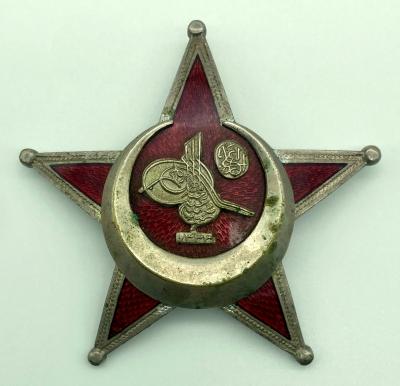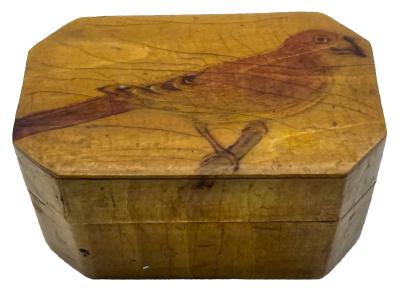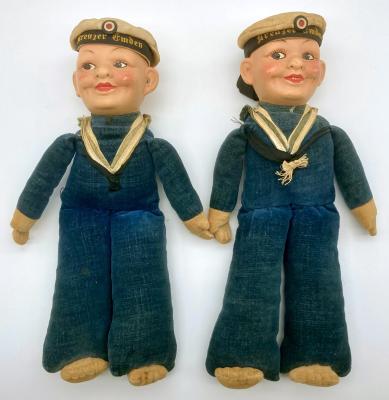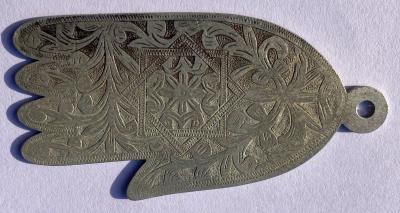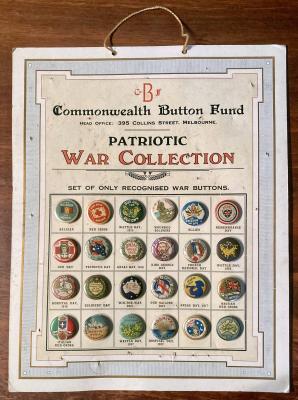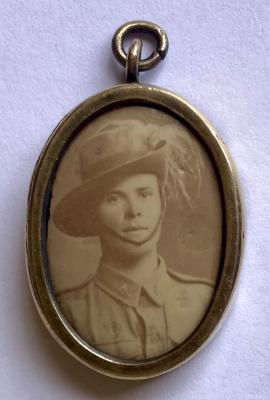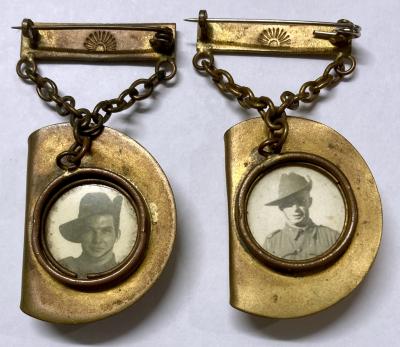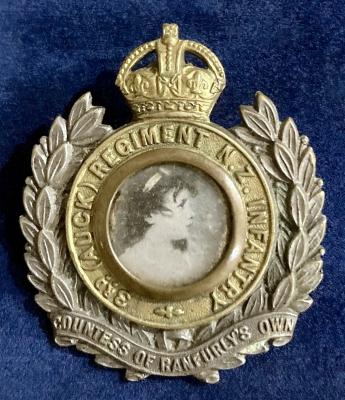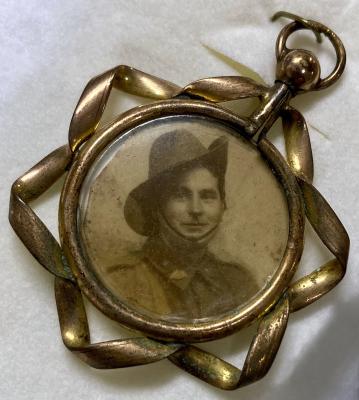Carved camel bone in the form of an Egyptian shabti
c. 1915 - 1930Carved camel bone in the form of a flat backed, mummiform Egyptian shabti.
The arms of the figure are folded across the chest with the right arm over the left, and are holding unidentified implements. The figure is wearing a horizontally striped headdress. Its face is crudely carved and ends in what appears to be a beard.
There is a central vertical panel containing hieroglyphs from beneath the arms to the flared semicircular base.
The reverse of the figure shows the saw marks from when the bone was split in two. There is a small metal wire glued at the base, perhaps used for mounting onto another object or to secure the bone while it was being carved.
This item was described as being a trench art piece or souvenir purchased by a soldier in the Ottoman Empire during World War One. It is not possible to know whether it was carved or bought at this time, but does seem to have significant age.
According to British historian, Guy de la Bédoyère, this item is a fake shabti. 'These were miniature figures installed in Egyptian tombs who were supposed to accompany the deceased and perform duties in the afterlife as servants. The hieroglyphs are a mixture of made-up signs and real signs. The penultimate one that looks like a squared 'U' means ka ('soul'), for example, but as a sequence they mean nothing. That used to happen in antiquity too - some illiterate artisans made them up for customers back then sometimes.'
He believes it could be World War One era, but the nemes headdress (which our piece has) became most familiar after the discovery of Tutankhamun's tomb in 1922, so he couldn't discount the interwar period. It is one of 'a plethora of trinkets sold to tourists, though at a glance bone doesn't seem to be a usual material of choice.'
Most shabti appear to be made from stone (such as alabaster), faience (ceramic) or timber. Bone is not commonly used.
Details
Details
Other items from Recollections of War
- Turkish War Medal (Harp Madalyası) - 1915
- Ottoman gold and seed pearl stick pin in form of crescent and star
- Lacquered timber lidded box with painted bird motif
- Two souvenir sailor dolls from the German ship, Kreuzer Emden
- Hamsa (Hand of Fatima) amulet
- Commonwealth Button Fund Patriotic War Collection display card - 1917
- Australian Light Horse sweetheart pendant
- Two metal sweetheart brooches in form of slouch hats containing soldier portraits
- WWI era double-sided pendant locket featuring an Australian soldier and young woman - 2
- WWI Countess of Ranfurly's Own Regiment cap badge sweetheart brooch
- WWI photographic portrait pin of Australian soldier
- WWI era double-sided pendant locket featuring an Australian soldier

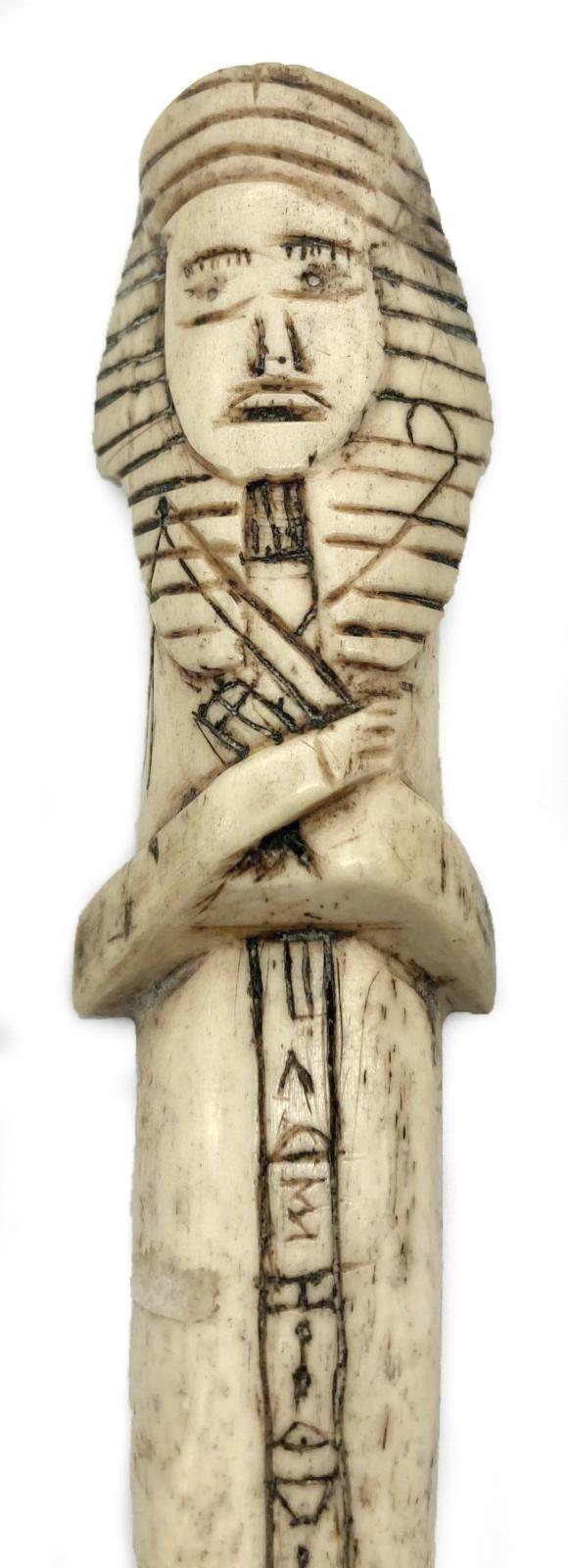


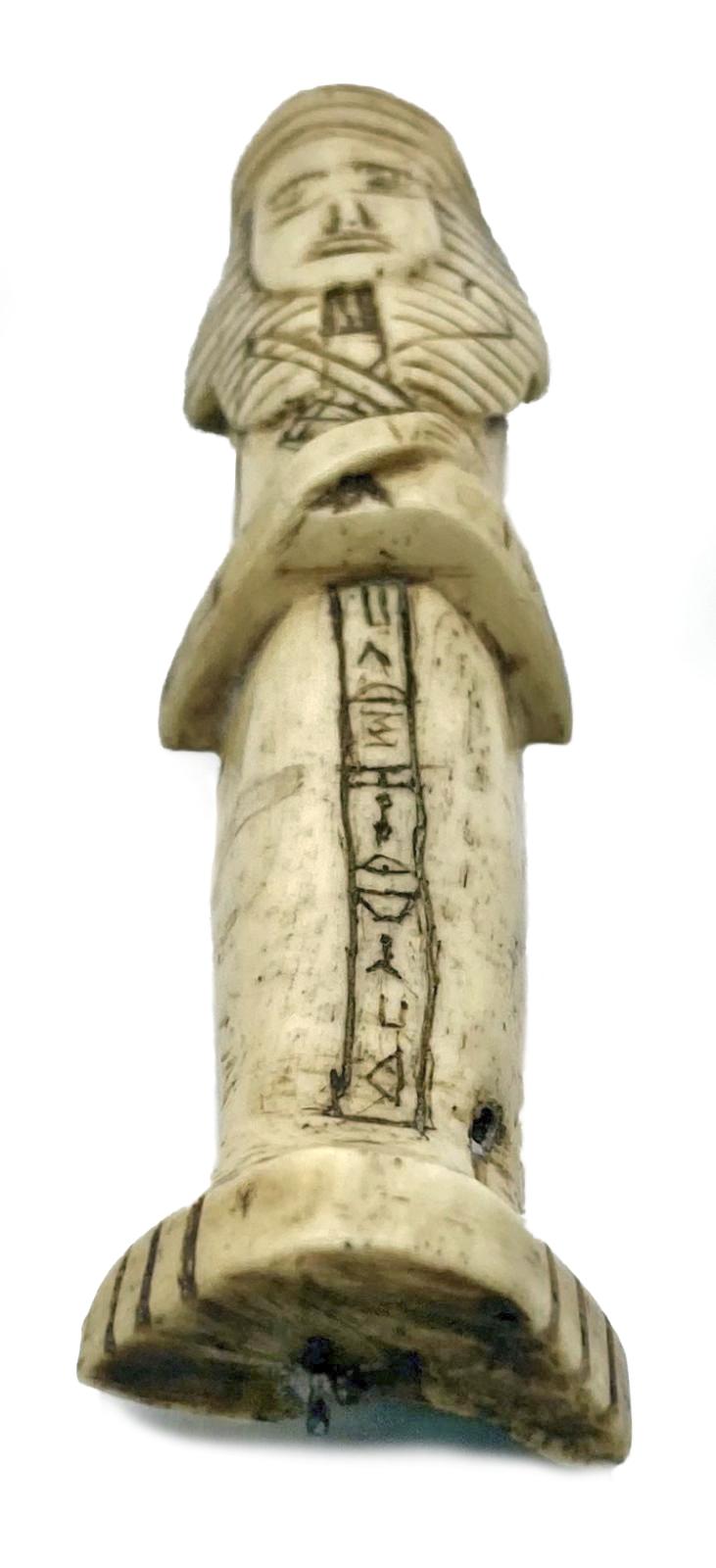

Scan this QR code to open this page on your phone ->

